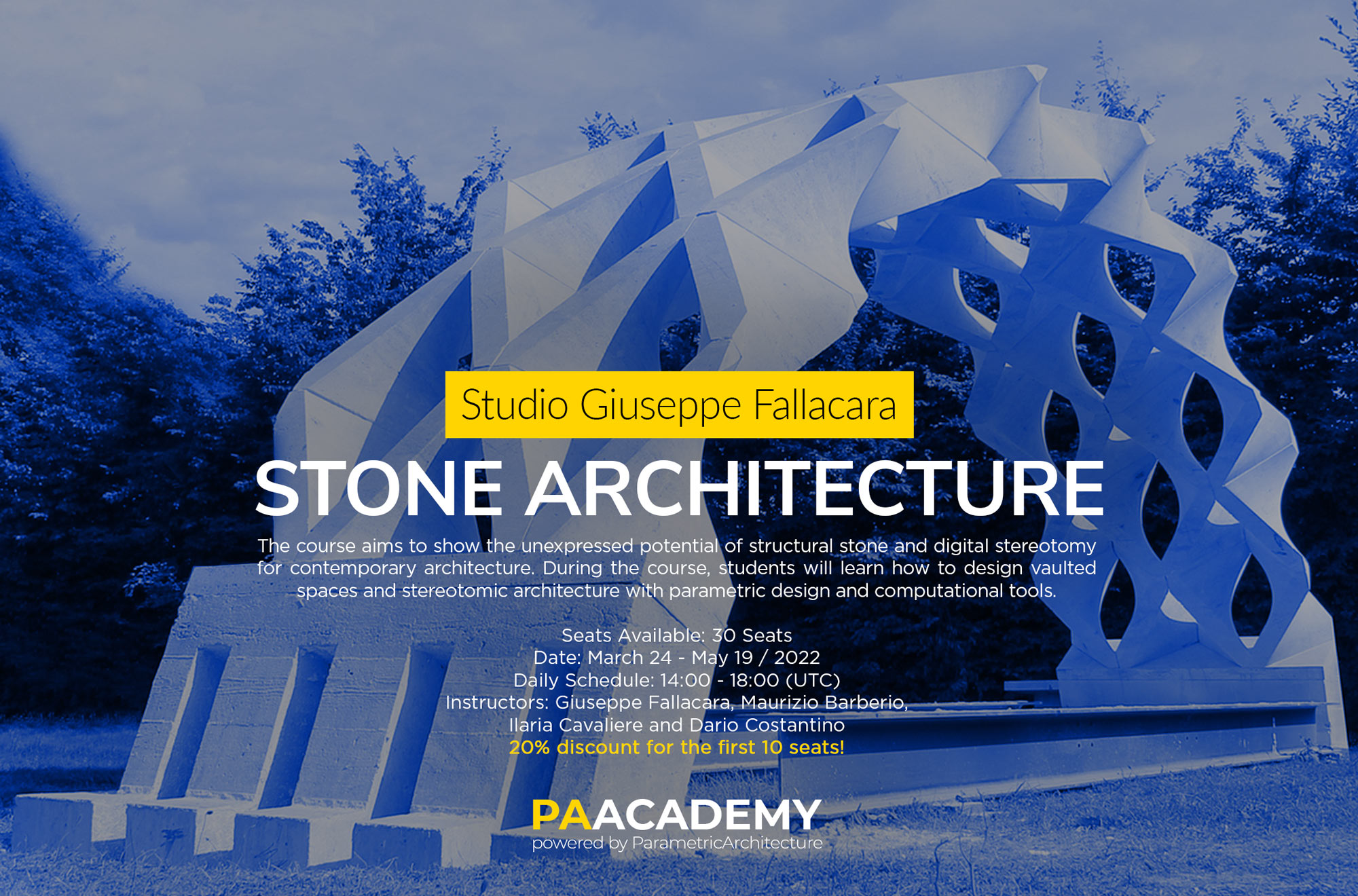Stone Architecture – Studio Giuseppe Fallacara
New Frontiers of Stone Architecture
The Stone Architecture course aims to show the unexpressed potential of structural stone and digital stereotomy for contemporary architecture. Students will learn how to design vaulted spaces and stereotomic architecture with parametric design and computational tools during the course. They will present their projects in highly visualized formats by using the visualization techniques taught during the workshop.
What is Stereotomy?
The term ‘‘stereotomy’’ in architectural literature was used for the first time in 1644 in the Examen des oeuvres de Sr. Desargues by Curabelle. Vaulted space has always represented the ideal ambit to operate the more sophisticated and complex reflections on architecture construction. This is particularly true for stereotomic architecture. According to Philibert de l’Orme, the architectural production based on the use of stereotomy has constantly focused on the paradox that could ensure that heavy stonework seems to be an aerial structure, “suspendue en l’air” (suspended in the air). Despite the heaviness of the stones with which Kick-off lecture they were built, such domed and vaulted spaces appear to defy gravity, resulting in dynamic and antistatic architecture derived from the airy, light, and ethereal sky.
Program:
The whole course will be divided into three parts: the first part deals with a historical introduction and evolution of stereotomic architecture; the second part is related to the three-dimensional parametric/variational modeling techniques of complex vaulted spaces; the last part is about visualization and production of pictures, videos, and VR applications to present a project. Students will be guided through the design process of a stereotomic project during the course, which will be modeled, rendered, and optimized for VR.
Week 1: 0.5-hour long introduction + 1.5 hours long lecture + 2-hour Rhino GH/3D Studio lab intro
Week 2: 1-hour long lecture + 1-hour Rhino GH/3D Studio Class + 2 hours design studio and live reviews
Week 3: 2 hours Rhino GH Class + 2 hours design studio and live reviews
Week 4: 2 hours Rhino GH Class + 2 hours design studio and live reviews
Week 5: 2 hours Twinmotion Class + 2 hours design studio and live reviews
Week 6: 2 hours Twinmotion Class + 2 hours design studio and live reviews
Week 7: 4 hours final presentations from students in front of the jury
Software requirements
- Rhinoceros 7.0. The 90-day trial version can be downloaded from the website www.rhino3d.com/eval.html
- Autodesk 3D Studio. The 1-year educational version can be downloaded from the website: https://www.autodesk.com/education/edu-software/
- Twinmotion. The free academic version can be downloaded from the website https://twinmotionhelp.epicgames.com/s/article/Twinmotion-Educational-version?language=en_US
- Grasshopper add-ons:
Mesh+
LunchBox
Pufferfish
Weaverbird
Leopard
Mesh Edit
Deliverables
This is an applied workshop. We will learn through involvement, so expect homework! You will work in groups of 3 to distribute the tasks and produce a complete project. Every student will need to keep a portfolio and produce videos of their work towards the final presentation. Each group will have 10 minutes to present their work on jury day. What we look forward to in your projects are:
- Research into stone structures and their characteristics
- Research into geometrical 2d and 3d lattices, model making
- Implementing first research into a parametric model using the given tools
- Informing models with reality
- Implementing learnings from the software and visualizations in your projects
- Final presentations + Crits from instructors and invited juries
Read more about the studio workshop from this link: Stone Architecture – Studio Giuseppe Fallacara
€625.00 €500.00





